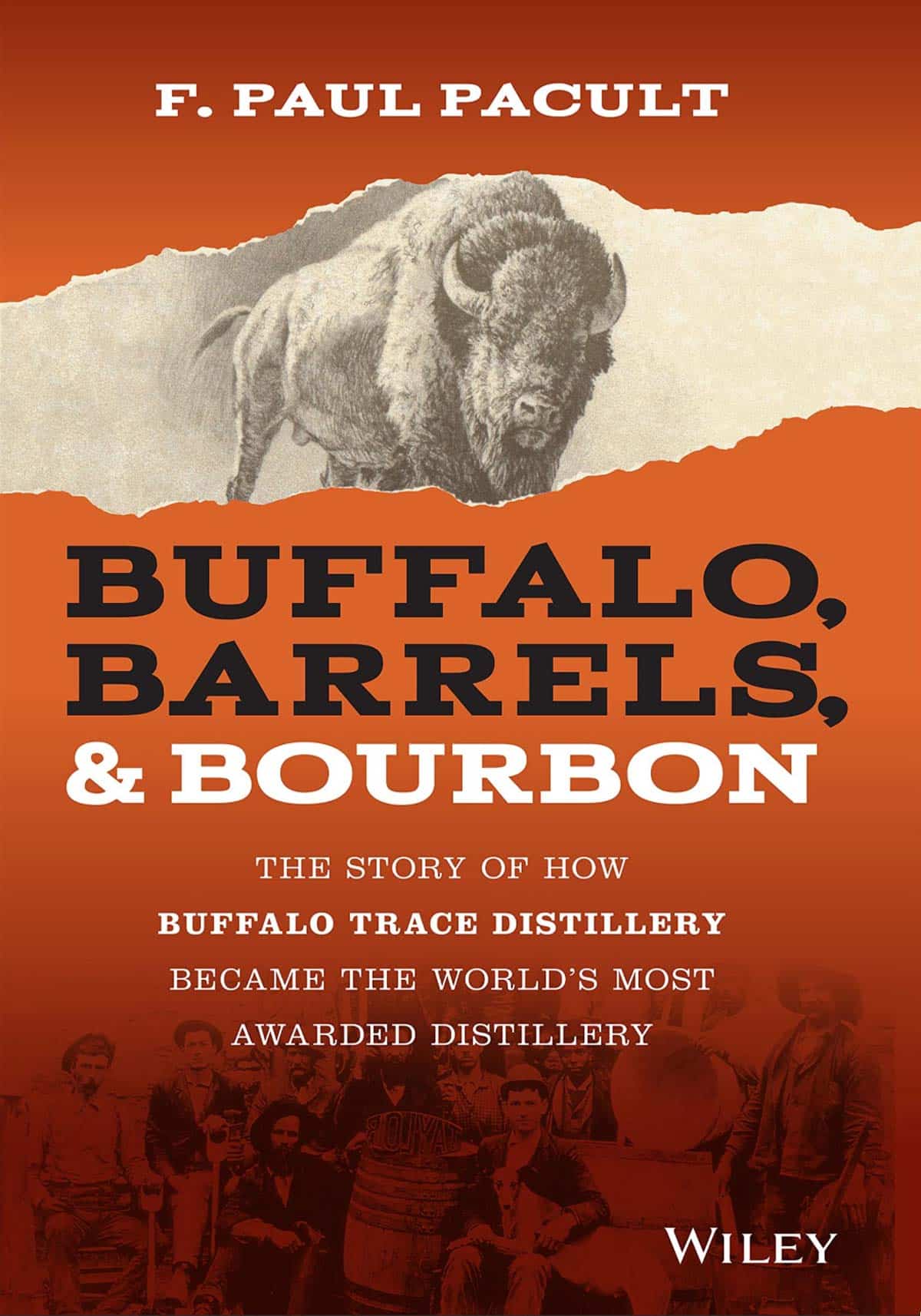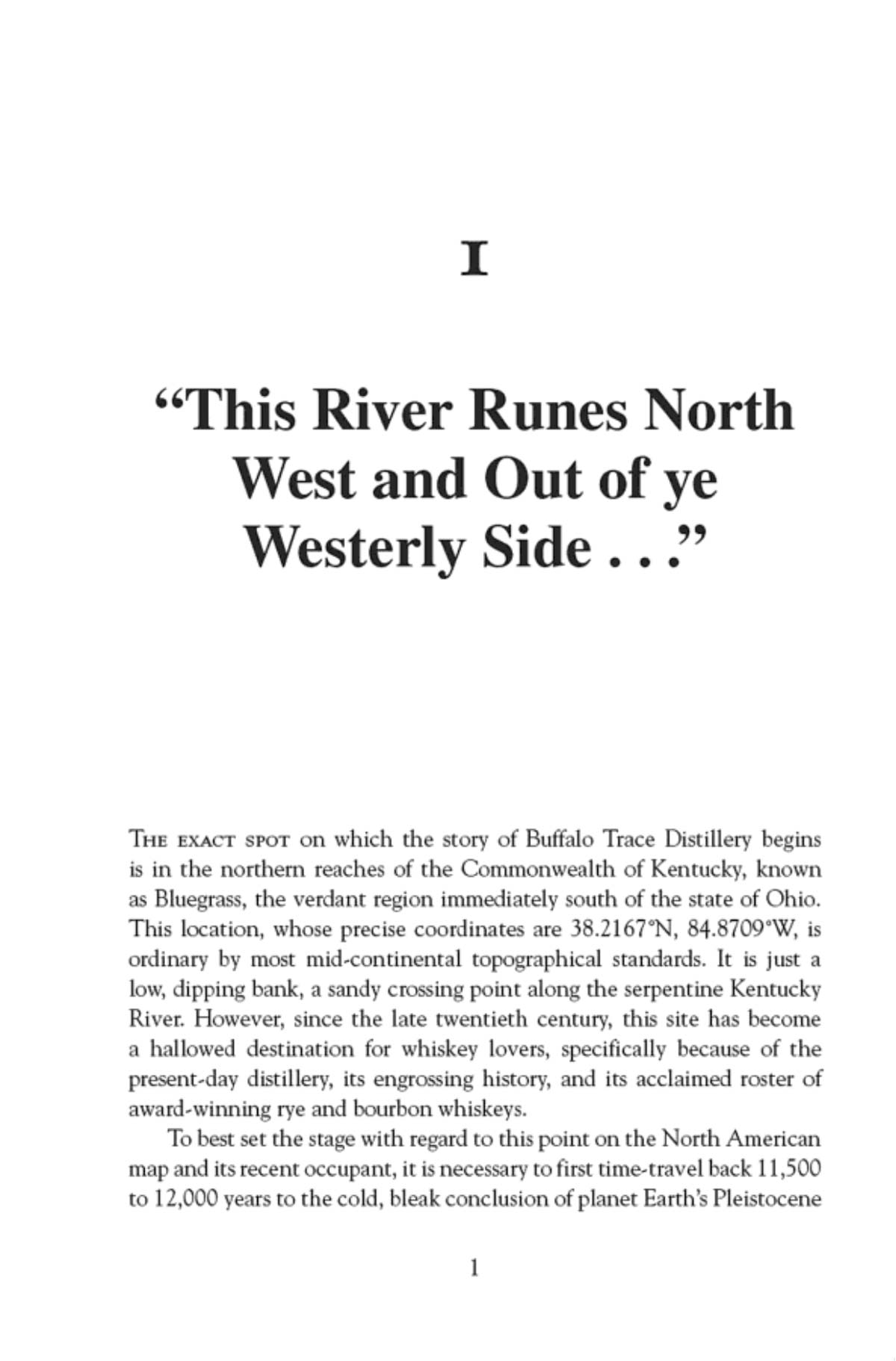Buffalo, Barrels & Bourbon Book Review
Buffalo, Barrels, & Bourbon by F. Paul Pacult is a study of how the bourbon gods giveth and taketh away.

Buffalo, Barrels, & Bourbon by F. Paul Pacult is a study in how the bourbon gods giveth and taketh away. Published on September 23, 2021, the book’s release was perfectly timed: Bourbon Heritage Month, the start of allocated bourbon season, and most relevantly the time at which Buffalo Trace normally releases the annual Buffalo Trace Antique Collection (BTAC).
Who could then have foreseen that not even two weeks later, Buffalo Trace would announce that this year’s BTAC would not include its flagship offering, George T. Stagg (GTS). This news, coupled with an already even-more-allocated-than-usual vibe suffusing the bourbon world, made me rethink how to review the entire book.
Buffalo, Barrels, & Bourbon: The Story of How Buffalo Trace Distillery Became the World’s Most Awarded Distillery is really three works in one: first comes the story of the buffalo trace, a tract of land trampled for millennia by migrating bison herds eventually settled by western pioneers pushing east in search of new land and new endeavors. The second part covers the entire history of the distillery that would become known as Buffalo Trace. The third part we’ll get to later.

Mr. Pacult elegantly sketches out how the history and geography of western Kentucky and the Ohio River Valley lent itself not only to the native bison and their movements, but to the development of trade routes and economic centers along the banks of the river and its tributaries. Due consideration is given to the plight of Native Americans forced out of their ancestral homelands by those later called “pioneers” or “entrepreneurs”, with a sidebar dedicated specifically to that end in addition to various descriptive passages.
There is, however, a key development underexplored: the grain. Corn-based whiskey was not the predominant spirit at that time (rum was the tipple of choice, followed by rye), but the interaction of “pioneers” with the tribes they encountered is how corn – or maize – was more fully introduced to the Euro-American palate. It might have taken decades more for corn-based whiskey to flourish over rum and rye, but those initial interactions in the context of the buffalo trace and its environs is a crucial inflection point.
The second part of Buffalo, Barrels, & Bourbon is a series of biographies covering those whose names are synonymous with Kentucky bourbon history: Col. E. H. Taylor, George T. Stagg, Lewis Rosenstiel, Albert Bacon Blanton, and Elmer T. Lee, among others. These biographies are the lens through which Buffalo Trace Distillery’s history is told. The ups – whiskey’s growth as phylloxera decimated the European brandy industry, the George T. Stagg Distillery surviving Prohibition, and the introduction of the single barrel bourbon by Lee – are juxtaposed well with the downs – natural disasters like the 1937 Ohio River Valley flooding, post-Korean War gluts and the dark days of whiskey between the 60s and 90s.
Through each man’s biography, a different facet is explored. Taylor and Rosenstiel, though separated by decades, both display the opportunistic purchases, expansions, and consolidations that kept the distillery going through the century-plus roller coaster ride. Blanton and Lee are the true stars, innovating, growing, and steering the distillery along that path while never letting standards drop. The profiles are overwhelmingly positive, though Rosenstiel’s shadier side – what Pacult calls “complicated” during an amusing aside – is never shied away from. Competitors who helped shape what Buffalo Trace would become, such as the Bronfmans of Seagrams, are portrayed as both adversaries and trading partners, fellow stewards of the spirit industry whose interactions with the Buffalo Trace timeline are tangential yet repetitive, demonstrating the industry’s cyclical nature as well as any economic pattern could.
Those biographies culminate with the most recent Buffalo Trace overseers: Master Distillers Gary Gayheart (1985-2005) and Harlen Wheatley (2005-present), Takara Shuzo Co. (owner of Age International and the Blanton’s brand), and Sazerac CEO Mark Brown.

Gayheart, Wheatly, and Shuzo each have their turn in the spotlight. Gayheart, taking over for the legendary Elmer T. Lee after his semi-retirement, kept distilling high-quality spirits in the last years of bourbon’s dark age and into the full-on renaissance of the late 90s and early 2000s. His distillate is what filled many many years of BTAC releases, and his keen eye, nose, and palate led the brand’s whiskies through the transition from the George T. Stagg Distillery to Buffalo Trace Distillery in 1999. Wheatly took what Gayheart had built and doubled down, adding even more new product lines, greatly expanding capacity, and continuing to elevate the Buffalo Trace brand as new entrants to the field kept popping up.
It is Mark Brown, however, who receives the most lavish praise. Don’t get me wrong: Brown’s leadership of the Sazerac Company since 1992 has been nothing short of miraculous. As Pacult’s title says, Buffalo Trace Distillery is the world’s most awarded distillery, and it’s not without reason. Brown’s hard-driving pursuit of bourbon’s “holy grail” (a reference made numerous times by Pacult throughout the book) is undoubtedly the core of Buffalo Trace’s success.
Unfortunately, this brings me to the third and final section of the book: the last three pages. Until then, every major player, good or bad, is presented as a human being. Ambition, greed, and ingenuity weave through every profile. Even the most positive biography that of Albert Bacon Blanton doesn’t hide his failures. In concluding his work, however, Pacult undermines the hundred-plus pages with the following statement:
“After two years of research, conducting tens of interviews, and writing, my conclusion is that Buffalo Trace Distillery is the world’s most awarded distillery for two reasons: first, the long line of innovators and distillers since 1870 that left indelible impressions and, second, Mark Brown’s deft and nimble leadership.”
That passage is followed by an equally hagiographical one just half a page later:
“Mark Brown and his Buffalo Trace management team give every indication that they are motivated neither by ego, nor by conventional wisdom, nor by the shape-shifting opinions of their competitors or of trade associations, but by a fathomless well of curiosity that nurtures creative, insightful, and progressive planning.”
I’m sorry – I have every bit of due respect for Paul Pacult and, frankly, for Mark Brown and his team, but this turns what was laudatory if mass-market work into one verging on flat-out propaganda. I make no accusations of impropriety and, as implied, I truly do respect what Mark Brown and the Buffalo Trace team have accomplished in the last three decades. But there’s a difference between giving a rightful due and blowing smoke.
The announcement exacerbated the gulf between those two that 2021’s BTAC would omit George T. Stagg because the barrels didn’t meet Buffalo Trace’s standards. BTAC – and GTS in particular – are the golden geese (put aside the Pappy line – that’s a different beast altogether). Are we seriously to believe that after 15+ years of tasting, testing, monitoring, and the highest bars of quality control, every barrel of GTS failed that QC, tripping at the proverbial finish line?
The two passages above and the reality don’t match up. I refuse to believe that a company and its “deft and nimble” leadership so supposedly focused on quality and planning could or would allow that to happen.
A typical GTS release is of about 100-150 barrels, carefully chosen. Let’s take the low end and say the 2021 batch would be from 100 barrels. How many of those had to miss the QC cutoff for Buffalo Trace to cancel the entire release? 25? 50? 75? If Buffalo Trace announced that due to QC and their standards, this year’s GTS would be extremely limited – say from just 50 barrels – it would not only make it the most limited GTS release ever but would simultaneously maintain the brand’s two greatest accomplishments: exclusivity and quality. Cancelling an entire release of this nature doesn’t reflect quality control, it undermines it. And, by extension, it undermines Pacult’s well-founded research about Buffalo Trace’s prodigious collective talents.
Long digression aside, I do in fact recommend reading Buffalo, Barrels, & Bourbon. The first two parts comprise all but the last three pages, and the information in those parts are interesting, well-written, and easily digestible for any Buffalo Trace fan. If you’re willing to fully separate the writing from the reality of this year’s BTAC announcement, the book is an admirable accounting of how today’s Buffalo Trace Distillery came to be. I learned more about the men who built the brand than I had in years of just drinking their work.
I do hope to ask Mr. Pacult about his monograph and how it fits with the current narrative. Perhaps there is no conflict, and I’m reading too much into an unfortunate situation. Or perhaps there is something to discuss. After reading Buffalo, Barrels, & Bourbon, I have no doubt that short of Buffalo Trace’s own team, Mr. Pacult might be the best person to answer these burning questions.

Disclaimer: Acclaim Press, Inc. provided Bourbon & Banter with a copy of this book for review. We appreciate his willingness to allow us to review it with no strings attached. The pictures in this article are used with permission from Acclaim Press. Thank you.

